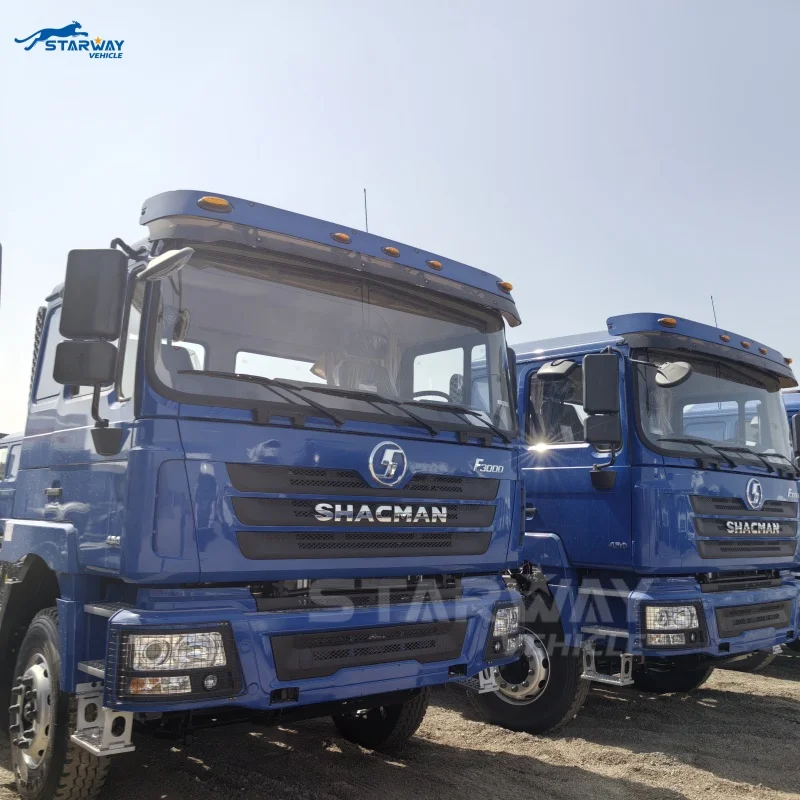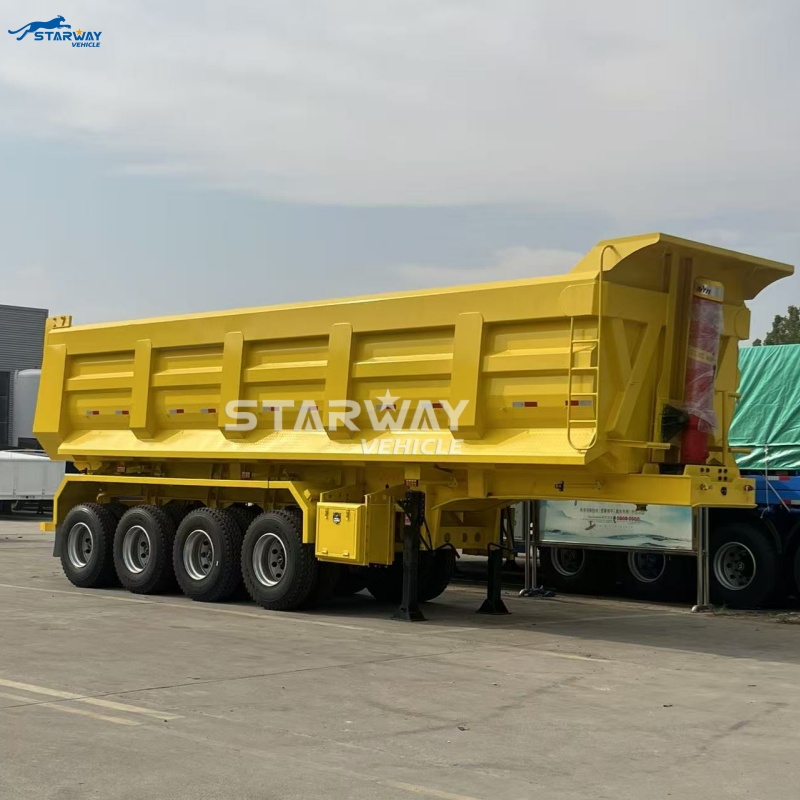Recent Posts
 Shacman vs. Competitors: Which Truck Delivers Better ROI?2025-11-26
Shacman vs. Competitors: Which Truck Delivers Better ROI?2025-11-26 Real-World Test: 4-Axle Tipper Semi Trailer Payload Capacity Revealed2025-11-13
Real-World Test: 4-Axle Tipper Semi Trailer Payload Capacity Revealed2025-11-13 The Hidden Costs of Operating a 70 Ton Flatbed Trailer (And How to Avoid Them)2025-11-11
The Hidden Costs of Operating a 70 Ton Flatbed Trailer (And How to Avoid Them)2025-11-11 4 Axles vs 3 Axles: Which Flatbed Trailer is Right for Your 70 Ton Load?2025-11-11
4 Axles vs 3 Axles: Which Flatbed Trailer is Right for Your 70 Ton Load?2025-11-11 4-axle Tipper Semi Trailer Power System vs Job Demands: 3 Real Case Results from Construction Sites2025-11-07
4-axle Tipper Semi Trailer Power System vs Job Demands: 3 Real Case Results from Construction Sites2025-11-07
Buying Guide: Evaluate Side Curtain Trailer ROI and Specs Fast
Introduction — Quick assessment for busy buyers
This guide targets decision makers who need to evaluate a side curtain trailer quickly and accurately. You will find clear definitions, application scenarios, technical specs, procurement checklists, ROI models and risk controls. Use this content to compare options and prioritize features that affect operating cost and uptime.
Definition and core advantages
A side curtain trailer is a freight trailer that replaces rigid walls with retractable curtains on the sides for fast side loading and flexible cargo stowage. The design accelerates loading and unloading, reduces dock time, and allows forklifts and cranes to access cargo along the trailer length. For many fleets, a side curtain trailer increases utilization and reduces handling labour.
Application scenarios and industry fit
Use a side curtain trailer when you need intermodal efficiency, frequent palletized loading, or varied cargo widths. Typical scenarios include retail distribution, manufacturing supply chains, construction materials, and cross-dock operations. Operators use side curtain trailer models where speed and side access provide measurable throughput gains versus box or flatbed trailers.
Technical performance: what to evaluate
When specifying a side curtain trailer, evaluate frame strength, curtain system, load securing, tarp material, floor type, axle configuration and kingpin rating. Ask for fatigue data on main beam and certified tests for load securing systems such as EN 12642. Pay attention to tare weight; lighter tare improves payload. Check electrical systems meet 24V standards for reliable lighting and ABS integration.
Key checklist
- Frame main beam height and material (Q345, high-tensile steel).
- Curtain fabric UV, tear and waterproof ratings.
- Load restraint points and compliance with EN 12642 or equivalent.
- Floor type: oak, plywood or aluminum composite for expected loads.
- Axle brand and capacity: FUWA/BPW or equivalent, and tire options.
Comparison: side curtain trailer vs alternatives
Compared to box trailers, a side curtain trailer reduces handling time and provides flexible access, often enabling mixed pallet loading. Versus flatbeds, the curtain provides weather protection and secure side loading. Compared with refrigerated units, side curtain trailers lack active temperature control but offer superior flexibility for non-temperature-sensitive goods. Use comparative metrics such as cycle time per pallet, damage rates, and cost per loaded tonne to decide.
Procurement guide: steps to evaluate suppliers
- Define mission profile: route, payload, loading method, and cycle time targets.
- Request technical datasheets with gross vehicle weight, tare weight and axle specs.
- Ask for fatigue and compliance certificates (EN 12642, ISO welding standards).
- Evaluate warranty, spare parts access and service network.
- Run a sample evaluation or pilot across typical routes to measure cycle time improvements.
Cost, ROI and lifecycle analysis
Estimate ROI by modeling reduced loading hours, lower damage claims, and increased payload utilization. Use a simple formula: ROI months = (Additional acquisition cost) / (monthly net savings). Monthly net savings include labor reduction, fewer damage costs, and higher revenue from faster turnarounds. A well-specified side curtain trailer often pays back within 12–36 months for high-turn operations. Include maintenance and tire costs and adjust for expected utilization years.
Standards, safety and certification
Insist on load securing certification such as EN 12642 and quality welding standards like ISO 3834. For electrical systems and lighting, verify compliance with 24V vehicle standards and regional lighting regulations. Confirm ABS and brake chamber specifications (e.g., 6 double brake chamber options) and ensure correct kingpin type (JOST bolt type) for towing compatibility. These elements affect fleet insurance and roadside compliance.
Maintenance and total cost of ownership
Plan preventive maintenance for curtain tracks, sliding rails, tarp tensioners and floorboards. Track tire life based on the recommended sizes such as 12R22.5 and ensure compatible axle brands (FUWA/BPW). Maintenance protocols reduce downtime and prolong service life. A proactive parts inventory and OEM-trained service reduce repair lead times and TCO.
Common selection mistakes to avoid
- Choosing lowest initial price without verifying payload gain or tare weight.
- Ignoring load securing certification and lateral restraint strength.
- Failing to test curtain durability under local climate and handling conditions.
- Overlooking spare parts lead times for specialized components.
Case example — pilot to full fleet rollout
A European distributor replaced 10 box trailers with side curtain trailer units across regional routes. After a six-month pilot, average loading time fell by 30%, damage claims declined 18%, and route productivity increased by one additional trip per week. The operator recouped the incremental investment in under 14 months and expanded the program to 40 units the next year.
Related product highlight
While evaluating cargo handling assets, consider complementary liquid transport options for mixed fleets. For example, a specialized tanker product provides integrated solutions across operations: 45000 Liters Palm Oil Tanker For Sale. This type of product demonstrates how modular fleet investments can diversify service offerings and revenue streams.
Supplier capability and customization
Choose suppliers with OEM/ODM experience, factory capacity and quality control processes. Evaluate claims such as custom design, strict assembly inspection and experienced technical teams. Suppliers that offer tailored main beam sizes, curtain reinforcement options, and branded axles deliver better long-term fleet fit and serviceability.
FAQ — quick answers for technical evaluators
- Q: Are side curtain trailer curtains waterproof? A: High-quality curtains resist water and UV; check specific fabric ratings and seam sealing.
- Q: Can side curtain trailers secure heavy pallet racking? A: Yes with certified lashing points and reinforced side beams complying with EN 12642 Type XL when required.
- Q: Do they work in cold climates? A: Yes, but choose material and tension systems rated for low temperatures to avoid brittleness.
Trends and future-proofing
Markets move toward lighter materials, digital load sensors, and modular body designs. Expect curtain materials to improve in tear resistance and weathering. Integration with telematics and load monitoring enables predictive maintenance and optimized route planning, enhancing the ROI of a side curtain trailer over its lifecycle.
Why choose us — call to action
Shandong Starway Vehicle Co.,Ltd combines decades of trailer manufacturing experience with OEM/ODM capabilities to deliver tailored side curtain trailer solutions. Contact our sales team for pilot programs, technical datasheets and ROI models to match your routes and loading patterns. Request a specification review to get a comparative cost analysis and timeline for delivery.
Contact us to schedule a demo, request detailed specs, or explore customization options for your fleet modernization program.
Leave A Reply





